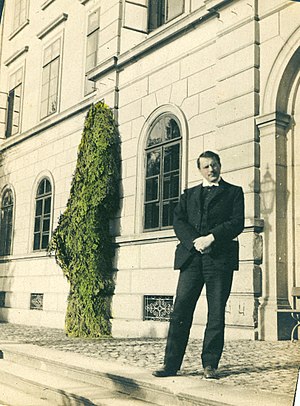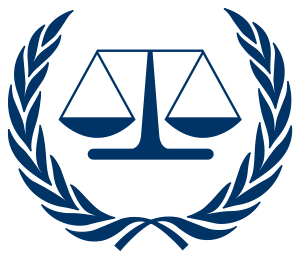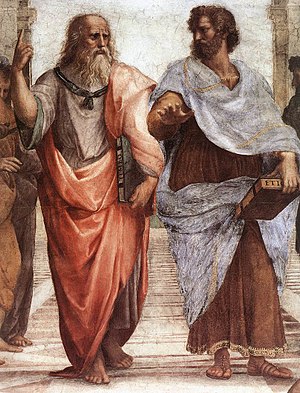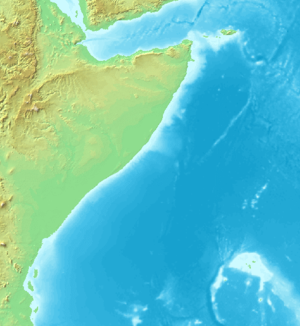 Image via Wikipedia
Image via Wikipedia
All cruel people describe themselves as paragons of frankness-Tennessee Williams
We now learn from the scientific and biological fraternity that all humans are a product of X and Y chromosomes. Geneticists can now reveal to us that there are 35,000 genes in the human DNA and 3 billion chemical base pairs in the human DNA. This is a testament to human equality before the Almighty God. Overemphasizing differences hides prejudices that are disgracefully inappropriate in context. Overemphasizing similarities is the best tool to attaining accomplishments in the workplace. The belief that “
all men are created equal” should be the best applicable emphasis.
The first thing to have in a modern workplace is a balanced culture, if not code of regulations to be equally observed by all regardless of race, color, creed, religion, national origin, political affiliation or sex. Rules that call for tolerance and harmony in the workplace must be applied to ensure tranquility and serendipity. A good leader is the one who discourages negative behaviors like incivility and other detrimental actions that are appalling in perspective.
Self-reliance Criterion
Having close affinity to employees of like racial group sets a bad precedent as it is a harbinger for discrimination and favoritisms. Here is a parable of two managers: One would always speak in his native tongue to some select employees he/she shared cultural background with while the other discouraged speaking in his mother tongue. The later is the kind of leader ripe for multicultural leadership. Organizations can discourage leaders not to rely solely on self-reliance criterion when making strategic decisions by acknowledging the cultural backgrounds of individuals and groups by first using the golden rule that states: “
do unto others as they would have them do unto them.” It is important to empower the leader to learn contrasting cultures even though the implied cultures may be in disagreement with one’s values. Leaders must instill social justice, harmony, and moral development and also have contact with different cultural groups so as to create a healthy atmosphere through a succession of cultural exchanges.
The Monitor Role
The monitor role has long appeared less interesting to many people because of their futile beliefs that it entailed keeping a watchful over other people’s daily activities or mode of operations. But to a leader or manager with modern thoughts and processes, it carries much weight in “
maintaining high performance in both individuals and groups" (Quinn, Faerman, Thompson, and McGrath, and St. Clair, 2006, p.113).
The Mentor Role
The mentor and facilitator roles are the two most important key managerial leadership roles as they are tasked with establishing effective relationships. The mentor role, also called the
concerned human role, is reflected in the science of caring and empathy where the manager is supposed to be thoughtful, selfless, and responsive and open to discussions and not shunning ideas, be friendly, openhearted, and reasonable. A mentor is a good listener who attracts new ideas, is appreciative, rewarding, and influences employee actions by motivating. Failure to observe the mentoring role leads to derailment, pseudo-transformational leadership, dictatorship, arrogance, and intolerance. Understanding self-worth opens the door for understanding others. Delegating effectively and developing employees is part of mentoring. In the real sense of the word, the remark “
mentor” has its meaning rooted in Greek, which may mean trusted counselor, coach or guide and therefore derives its true meaning from
The Odyssey, a poem written by Homer and addressed to Odysseus asking him to tutor his son Telemachus. Understanding the keys to effective delegation involves conscientiousness, influence, and answerability. Thus, the mentor role is about understanding self and others, communicating effectively, and developing employees.
The Facilitator Role
The Facilitator role rests on three important pillars namely: building teams, using participative decision making, and managing conflict-all part of the organizational improvement process. Furthermore, group work means having a commitment to a common goal or purpose, having a concrete sense of mutual responsibility, sharing information and having common communication structure, and setting clear roles and responsibilities that are equally interdependent in outlook. Roles are sets of expectations relevant to the individual and others in a given situation. With role clarity implying the absence of two demanding conditions notably role ambiguity and role conflict-role ambiguity entails interacting with others while role clarity leads to inconsistency or contradiction of information. Sending conflicting information is cause for role conflict. The facilitator role requires knowledge of the levels, sources, and stages of conflict. Differences in values, attitudes, beliefs, needs, or perceptions have been shown to cause conflicts.
Handling Communication Overloads
Ironically, the flow of information has transformed tremendously over the years and taken major leaps and bounds since the discovery of microchips and other technological advancements such as nanotechnology. Our capability to store and retrieve information through optical scanning and “
data compression” and our ability to do research without resorting to the olden ways of searching through library shelves, is a clear testimony as to how we have advanced “
two steps forward” and “
one step back” though we have heavy responsibilities of “
taming the electronic tiger” as we advance towards new innovations and immeasurable outputs. Thus, it is imperative for today’s managers to grasp the importance of modern office keeping by observing the TRAF system-which connotes to mean
Toss,
Refer,
Act, and
File-a novel way of overseeing the predicted modern paperless office.
On the other hand, recurrent work interruptions and overloads caused by excessive messages such as telephone calls, voice mails, cell phones, Personal Digital Assistants or PDAs, faxes, the intranet and internet, and e-mails should not instill fear or cause alarm but rather create challenges and enhanced momentum if effective management is to be observed in the workplace. Today’s managers are emboldened by their fervent desire to exploit the universally accepted sets of procedures known by the acronym OABC which stands for
Opening,
Agenda,
Body, and
Closing-four valuable tools for deciphering written messages regardless of whether they are in the form of a memo, circular or other regular correspondences. Likewise, face-to-face meetings are as essential as other forms of communication and should not be taken off the table. Teleconferencing, a contemporary hi-tech inclusion invented as result of human necessity, has been found to be in conformity with the international superhighway. Monitoring demands analyzing core processes, monitoring the value chain and output like judgments and opinions given, resources allocated, decisions made, mistakes detected, products planned, commitments negotiated, and courses taught.
The Myers-Briggs Type Inventory
The Myers-Briggs Type Inventory which is based on Carl Jung’s works highlights the five-factor model or basic tendencies with each factor named for one of two ends of a continuum namely neuroticism, extraversion, open to new experiences, agreeableness and conscientiousness. Agreeableness and extraversion are interrelated in that with no explicit leadership, the one who emerges with extraversion, agreeableness, and emotionality emerges the informal leader.
Johari Window
Named after Joseph Luft and Harry Ingham, the Johari window is another exemplary framework that helps increase one’s self-awareness. The Johari window is divided into four compartments namely:
open,
blind,
hidden, and
unknown. Hidden inconsistencies and hypocrisies including hiding, rebuffing, and evading learning about themselves, has been found to be a common attribute of many people. Sadly though, popular television shows, movies, and books are acted in such a way that the end results, because of concealment of true feelings or lack of self-awareness, characters may end up skeptical or tolerant.
Effective Interpersonal Communication
With acute logjam to effective interpersonal communication evolving as a result of inarticulateness, hidden agendas, status meant to impress and not offend, hostility due to lack of trust, and differences in communication styles, Chris Argyris of the Harvard Business School implemented what became known as “
the left-hand column issues” which implies “
what is thought” and “
the right-hand column” in reference to “
what is said” so that “
discussables” can be differentiated from “
undiscussables”.
The golden saying, “
nature has given men one tongue but two ears that we may hear from others twice as much as we speak”, as noted by the Stoic philosopher Epictetus, is a superior contemplation in the real sense which requires that we understand what is being said by others. The use of reflective listening helps us understand what others are saying and instills empathy in our inner souls.
Understanding Conflict Resolution
Understanding conflict resolution in the intrapersonal and interorganizational levels could be an added advantage. Avoiding approaches, accommodating approaches, competing approaches, compromising approaches, and collaborating approaches are some of the dimensions used in conflict management strategies. However, there are advantages and disadvantages of conflict management approaches. Also, as research has shown, allowing some degree of conflict could propel new ideas, innovation, and change. Conflicts can be stimulated and agreements managed by introducing guidelines for advocacy groups.
Team Building Strategies
There are informal approaches to team building and barriers to team building. Team building is an ongoing process and not an event. One approach to team building is for the team members to understand each other and have the willingness to observe each other consistently so as to generate substantial results. Social interaction among members like sharing a meal after work, holding annual holiday celebrations, and other important events opens a plethora of opportunities and other out of the ordinary accomplishments. Ironically, barriers to team building resurface due to not having the knowledge or experience of team building. One major factor that hinders team building is the lack of planning and coordination. Creating incentives to reward employees with exceptional performance emboldens employee resolve and attitude, increases social and economic standings, and lowers tardiness and the impervious “
free will” attitude. Autocratic, consultative, and group decision making are some of the strategies used to define who should participate and when.
Effective Meeting Management
Meetings may be horrifying and end in disasters because of poor facilitation or they may be well managed, heartening, and all-inclusive. Understanding the rules of effective meeting management, coming up with the required tools, and setting the stage with certain objectives in mind is a prerequisite for modern management. Understanding the meeting objective, creating appropriate participation, selecting the time and place of the session, and preparing and distributing the agenda in advance is a requirement if pitfalls are to be avoided. However, running the meeting with sets of priorities in mind is a good way of giving the attendants a new lease of life. For a meeting to be professional it is essential to have someone take the minutes; the leader should review the agenda; make certain participants know each other; do not diverge from the agenda; ease interruptions; promote overall membership; and bring to a close the meeting by reviewing decisions reached.
Understanding Four Dimensions of Leadership
Influencing others depends on having a concrete understanding of the
values,
assumptions,
beliefs, and
expectations (VABEs) of the people involved. Having the feeling that it is a God-given responsibility to change how others feel and believe leads to underestimation of those under your command. Those endowed with authority should grasp the benefits of morality, ethics, legality, and cultural context. Individually determining what’s right and wrong is known as morality; ethics is a body of knowledge and established and conventional guiding principles of conduct created for groups of people or organizations; legality implies acting upon the established laws of humanity; while cultural context refers to observing the cultural values of others in the workplace. In public and professional conduct it is best to apply ethics and in private and for personal values wrap yourself around the garb of morality. When dealing with those under your authority, always keep in mind that what goes around comes around. It was Charles Grodin who once said, “
It always surprises me that otherwise intelligent people don’t realize that if you treat people badly, it will eventually come back to you”. To give you an example of what goes around comes around, it is worth looking back what history has to tell us. “
In the year 260 C.E., the Roman Emperor Valerian fell captive to Sasanid forces. He spent his last years at the Sassanid court in Ctesiphon, where his captors forced him to stoop and serve as a mounting stool when the Sasanid king wanted to ride his horse". (After his death, the Sasanids preserved Valerian’s skin as a memento of their victory over the Romans), (Jerry H. Bentley and Herbert F. Ziegler ). One’s leadership qualities should not be repugnant to justice and to the subjects providing essential services or else there could be serious ramifications resulting in the dissolution of the entire enterprise. For example, a medieval law stated that “
if two persons fell under suspicion of crime, the uglier or more deformed was to be regarded as more probably guilty” (Wilson and Hernstein, 1985).
 Image via Wikipedia
Image via Wikipedia























